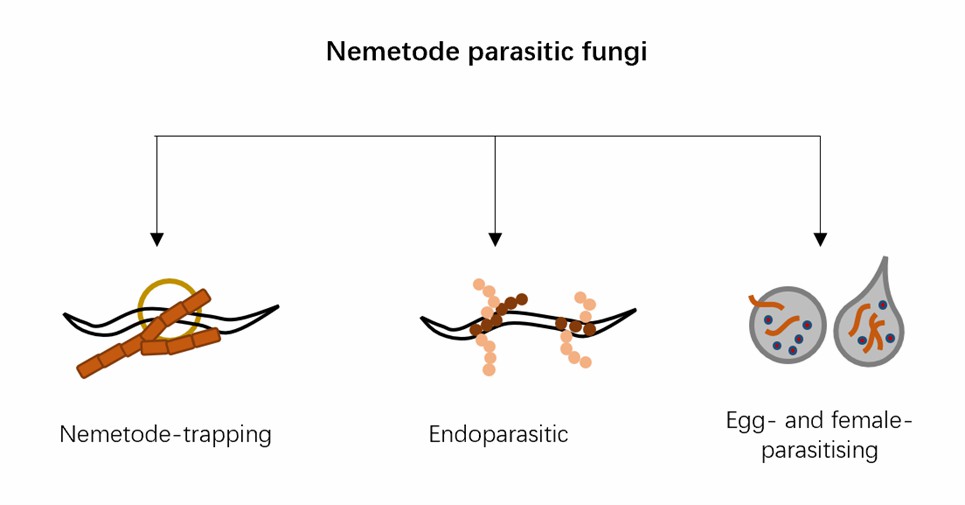Fungi are important natural enemies of nematodes in soil ecosystems, which can suppress populations of plant parasitic nematodes. These fungi are broadly distributed in terrestrial and aquatic ecosystems from the tropics to Antarctica. Efforts have frequently been made to control diseases caused by plant-parasitic nematodes by using nematode-trapping fungi, but results have been inconsistent. Nematophagous fungi are classified based on the mode of their inhibitory action against plant-parasitic nematodes, including predatory fungi, parasitic fungi, and toxin-producing fungi.
Lifeasible makes full use of our specialized libraries, selection strategies, and maturation techniques to optimize the stability and performance of plant science. With advanced technology and experienced staff, we provide analysis of fungi control for plant nematodes to global clients to support their research.
 Fig.1 Types of nematode parasitic fungi.
Fig.1 Types of nematode parasitic fungi.
Lifeasible offers a reliable analysis of fungi control for plant nematodes to meet your research demands. With years of experience in plant science, our advanced platforms can help our clients solve various difficulties and conduct research. If you are interested in our services or have any questions, please feel free to contact us or make an online inquiry.
Lifeasible has established a one-stop service platform for plants. In addition to obtaining customized solutions for plant genetic engineering, customers can also conduct follow-up analysis and research on plants through our analysis platform. The analytical services we provide include but are not limited to the following:
STU-CRISPR System Improves Plant Genome Editing Efficiency
April 19, 2024
Application of Exosomes in Facial Beauty
April 12, 2024